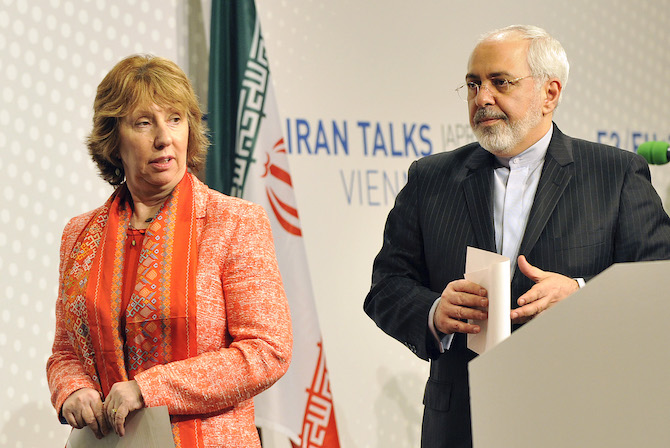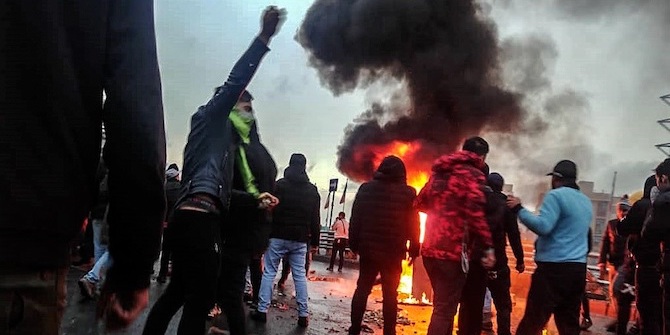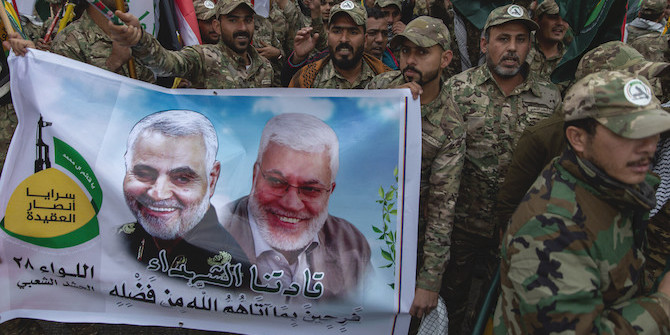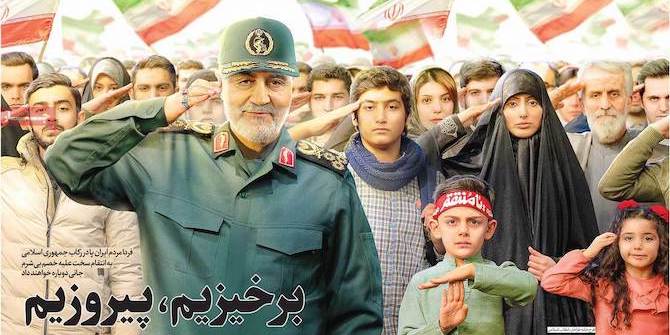by Ghoncheh Tazmini

The US-ordered assassination of Iranian General Qassem Soleimani in January 2020 was the latest instalment in Washington and Tehran’s ‘soft war’ (jang-e narm). This episode was as traumatic for the Iranian polity as the US hostage crisis was for the Americans. The two states inched perilously close to open conflict, as Iran promised ‘tough revenge‘ in response to the assassination. This was not the first time that this soft war almost became a hard war: in the summer of 2019, the tanker/drone standoff in the Persian Gulf risked thrusting both countries into military confrontation. Quickly lowering the game rhythm, the US and Iran averted hard war by calibrating their responses to what they perceived as acts of aggression.
Michael Gross and Tamar Meisel’s qualification of soft war in Soft War: The Ethics of Unarmed Conflict best describes the currency of the US-Iran dialectic. According to their definition, ‘soft’ practices include cyber warfare, economic sanctions, trade wars, media warfare, propaganda, nonviolent resistance, and the use of international law for strategic purposes. In essence, a soft war is a nonviolent, non-kinetic war. On the US side, all of the coercive elements of President Donald Trump’s ‘maximum pressure’ campaign encapsulate the notion of a soft war. On the Iranian side, the most discernible soft war counter-measure is its strategic doctrine, which is characterised by support for regional non-state groups and militias that challenge Iran’s rivals, which happen to be US regional allies.
The soft war narrative originally surfaced during the 2009 Iranian presidential election, after which there were widespread demonstrations over allegations of fraud. Having conceptualised the notion of a soft war, the government set up the ‘Unit of the Soft War’ (Setad-e Jang-e Narm) in 2011 to disrupt the infiltration of foreign ideas and influences through information communication technology. The parliament also dedicated a budget to counter-measures, including propaganda, education, media manipulation and the management of electronic information access. Soft war was ‘more dangerous than conventional war’, warned Brigadier General Masoud Jazayeri, while Iranian Intelligence Minister Heydar Moslehi cautioned that ‘the enemy has a long-term plan in the area of soft war and has spent over $17.7 billion in order to topple the sacred establishment of the Islamic Republic.’ Referring to the assassination of two Iranian physicists, Moslehi claimed that 80 US-led organisations were planning to topple the Islamic republic. Thus, soft war came to denote a broader portfolio of coercive practices, and for that reason, Gross and Meisel’s more comprehensive definition is more accurate.
The current soft war has not led Iran into changing its behaviour or policies. In fact, soft war has perpetuated the very pathologies it was supposed to correct. Iranian deterrence capabilities have not been contained. Tehran has not scaled back on its support for regional proxies and it appears more determined than ever to enable local actors to secure Iranian interests over the long term. Soft war has only validated the regime’s existential fears and justified its military doctrine by re-entrenching the notion that had Iran not carefully curated a regional bulwark, it would have been the target of a US-led hard war.
‘Maximum pressure’ policies, including US withdrawal from the Joint Comprehensive Plan of Action (JCPOA) and the re-imposition of sanctions have also yielded opposite results. Tehran has reduced its commitments to the nuclear accord, and has threatened to withdraw from the Non-Proliferation Treaty (NPT). In domestic politics, the soft war narrative has metastasised within the Iranian polity. The casualty of this war is Iranian civil society, which has become the collateral damage of Trump’s policies. The Iranian populace has also been caught in the regime’s friendly fire: soft war has led Iranian leaders to securitise domestic politics in order to avert US-backed unrest.
The US-Iran dialectic has been burdened by over 40 years of stasis, with each trapped in ‘no-man’s land’ in which there is neither full-scale war nor any prospect of normalisation. The JCPOA interregnum temporarily instilled hope that soft war was making way for ‘soft diplomacy’, however, Trump’s withdrawal from the nuclear deal signalled a return to soft war principles. What are the prospects for steering the two countries out of a stalemate in which they both find themselves? A fundamental paradigmatic shift needs to take place if we are to return to soft diplomacy dynamics.
The US-Iran impasse is a symptom of a failure to establish pluralism in the international order. Pluralism in the international system is based on the idea of cultural diversity, different ‘civilisational’ paths, and a rejection of ideological homogeneity. It is founded on the belief that each state or political model has to resolve its own challenges, and that historical experience cannot be transplanted from one context to another. This approach is based on repudiation of the notion that the historical experience of one set of states can act as universal models to all others. If the Iranian regime’s fear of the covert transfer of norms and institutions through regime change or military confrontation is mitigated, Tehran may find itself on a more stable footing on which to interact regionally. With fears of regime overthrow neutralised, Tehran may be more willing to scale back its support for regional proxies, and to curb development of its missile defence programs – two major points of contention. With the right incentives from not only the US but its European partners, Iran may even be willing to foster more pluralism internally and to relieve some of the pressure it has imposed on civil society as a result of its soft war fears.
This is entirely plausible – ahead of the Iranian parliamentary elections on 21 February 2020, which raised criticism over the disqualification of moderate candidates and lawmakers, the government announced it was preparing a new draft law for a referendum limiting the powers of the Guardian Council of the Constitution. On 7 February 2020, President Hassan Rouhani issued an order in response to a request from Iran’s largest reformist party. This demonstrates that the Iranian regime is not monolithic, and that it can exercise flexibility as it continues to clamour for a return to the nuclear negotiating table.
Diplomacy is not dead – what is needed is a new logic of engagement, beginning with the repudiation of soft war in favour of soft diplomacy.







2 Comments